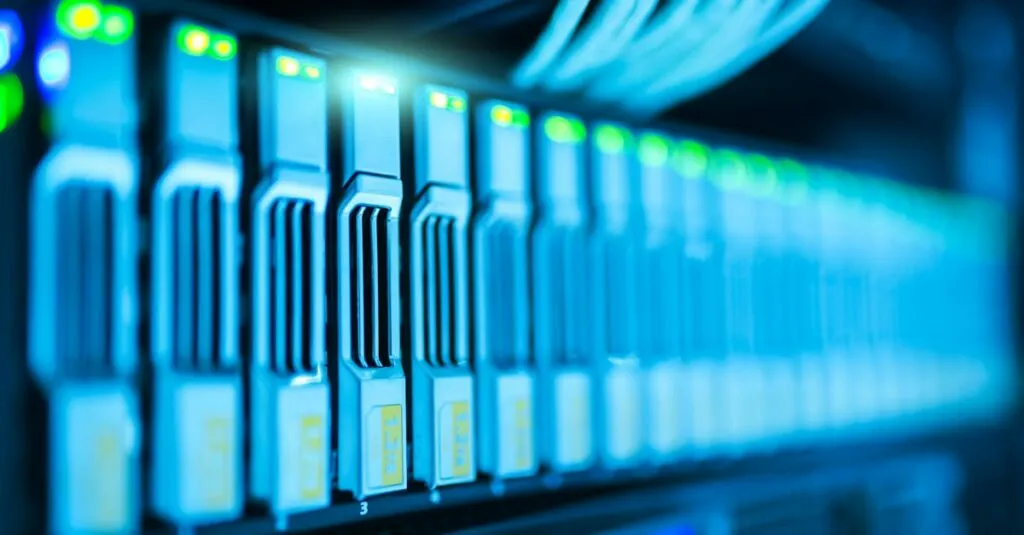In a world where your fridge can text you about its low milk levels and your toaster might just be plotting world domination, the Internet of Things (IoT) has transformed everyday appliances into smart gadgets. But with great connectivity comes great responsibility. Cybersecurity in the IoT landscape isn’t just a buzzword; it’s a necessity. Imagine a hacker using your smart thermostat to turn your home into a sauna while you’re stuck in traffic. Not exactly the relaxing evening you had in mind!
Table of Contents
ToggleOverview of Internet of Things Cybersecurity
Cybersecurity in the Internet of Things involves protecting connected devices and networks from digital threats. Protecting smart gadgets is crucial as they can control critical systems in homes and businesses. Vulnerable devices can lead to unauthorized access, allowing hackers to manipulate functionality or steal personal information.
Statistics show that by 2025, IoT devices are projected to outnumber traditional computing devices by three to one. Increased connectivity introduces various risks, including data breaches and distributed denial-of-service attacks. Cybersecurity strategies must encompass strong protocols to safeguard communications between devices.
Users should prioritize using strong, unique passwords for each device. Updating device firmware regularly can mitigate vulnerabilities, ensuring the latest security features are in place. Employing network segmentation can isolate IoT devices from essential data networks, enhancing overall security.
Additionally, manufacturers play a role in IoT cybersecurity by incorporating security features during the design phase. Security by design promotes built-in protections, making devices more resilient against attacks. Engaging in regular security assessments helps companies identify weaknesses in their systems.
Employing these practices creates a more secure IoT environment. Collaboration between manufacturers, users, and cybersecurity experts strengthens defenses against potential threats. Establishing a comprehensive approach to IoT security safeguards individuals and businesses, promoting safer connected experiences.
Common Threats and Vulnerabilities
The Internet of Things (IoT) introduces various threats and vulnerabilities that can compromise device and network security. Understanding these aspects is crucial for ensuring an effective cybersecurity strategy.
Device Security Risks
IoT devices often lack robust security features. Many manufacturers prioritize functionality over security, leading to vulnerabilities. Weak or default passwords enable hackers to easily gain access. Malware can exploit these vulnerabilities, manipulating devices for malicious purposes. Examples include smart cameras being hijacked for surveillance. Inadequate firmware updates leave devices susceptible to attacks. Users must regularly verify that devices run the latest software to minimize risks.
Network Security Challenges
Networks supporting IoT devices face significant security challenges. A single compromised device can serve as an entry point for broader attacks. Distributed denial-of-service attacks can overwhelm network resources, leading to service disruption. Small and medium-sized businesses often lack adequate security protocols to address network vulnerabilities. Securing the network through segmentation can help contain potential breaches. Additionally, monitoring network traffic for unusual activity enhances overall security. Cybersecurity awareness among users greatly contributes to identifying and mitigating emerging threats.
Best Practices for IoT Security
Implementing effective security measures is essential for protecting IoT devices and networks. Adopting best practices can significantly reduce vulnerabilities associated with connected devices.
Device Management
Effective device management involves maintaining a clear inventory of all connected devices. Users must disable unnecessary features and services on devices, minimizing attack surfaces. Regularly changing default usernames and passwords enhances security, making unauthorized access more challenging. Utilizing access controls restricts device usage to authorized personnel only. Vendors should provide mechanisms to securely onboard and offboard devices, ensuring a streamlined management process.
Data Encryption
Data encryption serves as a crucial layer of protection for sensitive information. Encrypting data both in transit and at rest safeguards it from interception and unauthorized access. Utilizing strong encryption protocols, like AES, enhances security. End-to-end encryption ensures that only authorized devices can decrypt and access data. Implementing secure communication methods, such as TLS, further protects data exchanged between devices and networks.
Regular Updates
Regular updates are vital in maintaining the security of IoT devices. Manufacturers should provide firmware updates to address known vulnerabilities. Applying these updates promptly helps mitigate risks posed by cyber threats. Automating the update process can improve adherence, reducing the chances of outdated firmware remaining on devices. Security patches must be checked regularly to ensure devices remain protected against new threats.
Future Trends in IoT Cybersecurity
The landscape of IoT cybersecurity is evolving rapidly, driven by advancements and new regulations. Anticipating future trends is essential for staying secure in this dynamic environment.
Emerging Technologies
Artificial intelligence and machine learning play significant roles in IoT cybersecurity. These technologies enable real-time threat detection and response, drastically improving defense mechanisms. Blockchain technology also gains traction, providing decentralized security measures that enhance data integrity. Additionally, the rise of edge computing allows processing to occur closer to the data source, reducing latency and minimizing attack surfaces. As suppliers push for enhanced protection, biometric authentication methods are increasingly integrated into devices. These advancements collectively aim for higher resilience against cyber threats.
Regulatory Developments
New regulations are emerging to address the cybersecurity challenges posed by IoT devices. Governments worldwide are recognizing the need for stringent standards to protect consumer data. The European Union’s General Data Protection Regulation (GDPR) introduced significant compliance requirements that impact IoT manufacturers. In the U.S., the Cybersecurity Improvement Act promotes the adoption of secure IoT device practices. Regulatory bodies emphasize accountability, encouraging companies to incorporate security features in design and development phases. Compliance not only strengthens security but also builds consumer trust in IoT technology.
The landscape of IoT cybersecurity is evolving rapidly as connected devices become integral to daily life. With the surge in IoT device adoption, the potential for cyber threats increases significantly. It’s essential for users and manufacturers to prioritize security measures that protect against vulnerabilities.
Implementing best practices like effective device management and data encryption can significantly enhance security. Additionally, collaboration among stakeholders is vital for fostering a safer IoT environment. As regulations continue to develop, embracing these changes will not only protect users but also build trust in the technology driving the future. Staying informed and proactive is the key to navigating the complexities of IoT cybersecurity.





